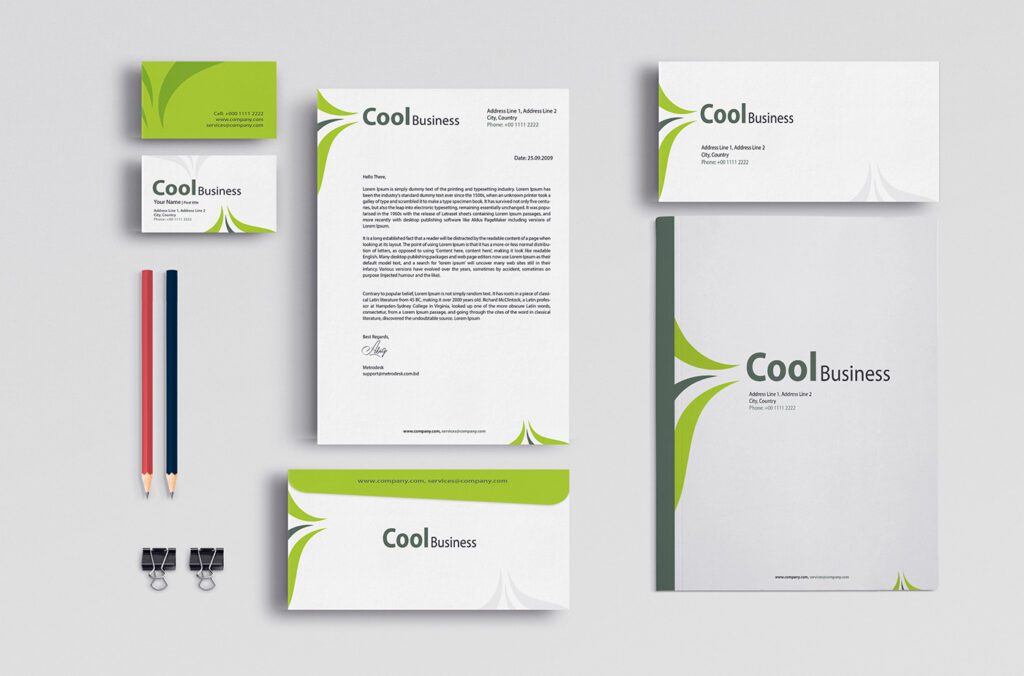
Stationery Design: Crafting Impressions Through the Art of Creative Expression
- by Editone International
- Posted on November 25, 2023
Stationery design is more than just paper and ink; it’s a reflection of identity, style, and professionalism. Whether for personal use or corporate branding, thoughtful and visually appealing stationery can leave a lasting impression. Let’s explore the key elements and considerations in crafting captivating stationery designs.
1. Branding Consistency: A Unified Visual Language
Stationery serves as a tangible extension of a brand’s identity. Consistency in design elements, such as colors, logos, and typography, across business cards, letterheads, envelopes, and other stationery items, reinforces a unified visual language. This cohesiveness builds brand recognition and professionalism.
2. Logo Placement: A Focal Point of Recognition
The logo is often the centerpiece of stationery design. Strategically placing the logo on business cards, letterheads, and other items ensures immediate recognition. Consider variations in size and placement to maintain balance and harmony within the overall design.
3. Color Palette: Setting the Tone
Color choices play a crucial role in stationery design. The color palette should align with the brand’s identity and evoke the desired emotions. Consistent use of colors across different stationery items creates a cohesive and memorable visual impact.
4. Typography: Readability and Brand Personality
Typography contributes to both the readability of the content and the expression of brand personality. Select fonts that align with the brand’s tone—whether it’s modern, traditional, playful, or formal. Consistency in font choices fosters a sense of coherence.

5. Paper Quality: A Tactile Experience
The choice of paper communicates a tactile aspect of the brand. From the thickness of business cards to the texture of letterheads, the paper quality should align with the brand’s positioning. A well-chosen paper adds a tangible layer to the overall stationery experience.
6. Whitespace: Balancing Elements
Whitespace, or negative space, is a crucial aspect of design. It helps prevent visual clutter and allows key elements to stand out. A well-balanced use of whitespace contributes to the overall elegance and readability of stationery.
7. Versatility: Adapting to Different Items
Consider the versatility of the design across various stationery items. The same visual theme should seamlessly adapt to business cards, letterheads, envelopes, and other materials. This adaptability ensures a consistent brand image across diverse contexts.
8. Contact Information: Clear and Concise
Ensure that contact information is presented clearly and concisely. Legible fonts and a well-organized layout for phone numbers, addresses, and email addresses enhance the functionality of the stationery. Easy access to contact details is especially vital on business cards.
9. Customization: Tailoring Designs to Occasions
For personal stationery, consider customization based on occasions. Wedding invitations, thank-you cards, or holiday greetings can showcase different facets of design, allowing for personal expression while maintaining a connection to the overall brand or individual style.
10. Print and Production Quality: Attention to Detail
Attention to print and production quality is paramount. High-resolution images, precision in color reproduction, and accurate cutting and finishing contribute to a polished and professional appearance. Quality stationery reflects a commitment to excellence.
Conclusion
In the realm of stationery design, each piece is a canvas for making a statement. Whether creating a corporate identity or personal expression, the art lies in the details—from the choice of colors and fonts to the tactile feel of paper. Crafted with care, stationery becomes a powerful tool for leaving a lasting impression, one that speaks volumes about identity, professionalism, and the thoughtfulness behind the design.
https://www.youtube.com/@editoneinternationalpvtltd3570
Stationery design is more than just paper and ink; it’s a reflection of identity, style, and professionalism. Whether for personal use or corporate branding, thoughtful and visually appealing stationery can leave a lasting impression. Let’s explore the key elements and considerations in crafting captivating stationery designs. 1. Branding Consistency: A Unified Visual Language Stationery serves…
